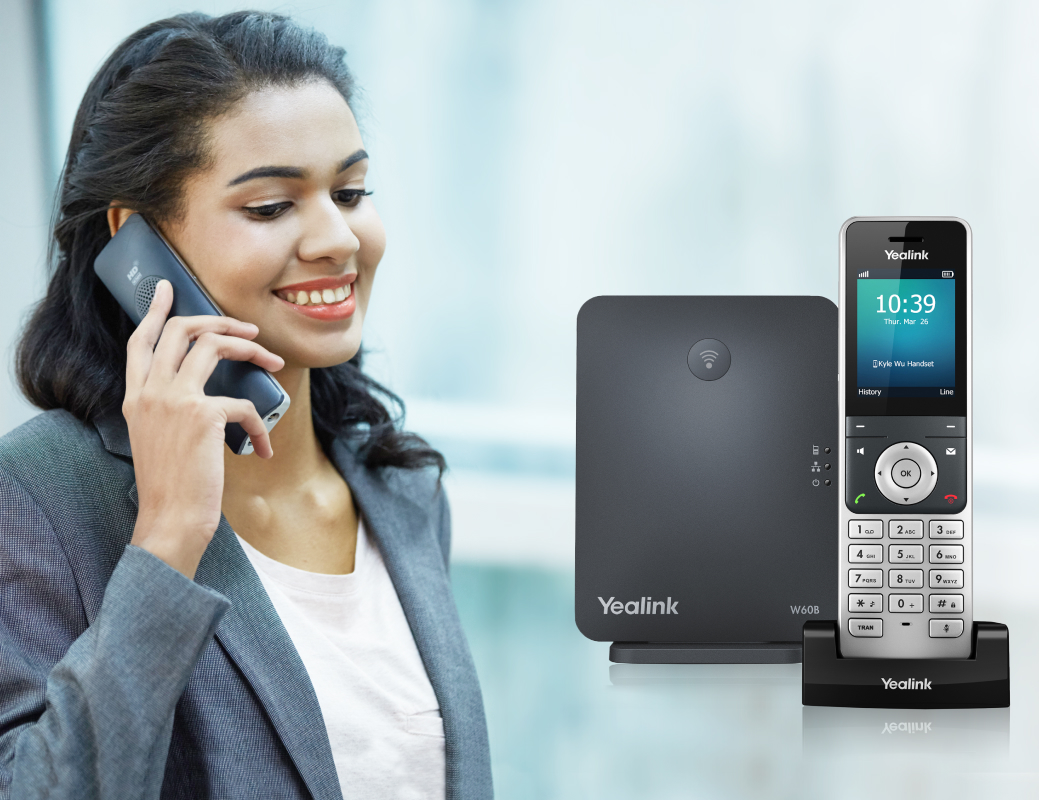In a world that’s constantly evolving, the way we communicate has undergone significant transformations. With technology advancing at a breakneck pace, the choice between traditional landlines and modern VoIP phone systems can feel like navigating through a jungle of options. But fear not! This comprehensive comparison will illuminate the path, guiding you through the thicket of features, benefits, and potential drawbacks of both communication methods.
Traditional Landlines Explained
What Are Traditional Landlines?
Traditional landline phones operate through a physical connection via copper wires or fiber-optic lines to transmit voice signals. These systems have been the backbone of telecommunication for decades, providing reliable and straightforward voice communication. When you pick up a landline phone, you're connected directly to the telephone network without the need for internet connectivity.
How Do Traditional Landlines Work?
The mechanics behind traditional landlines are relatively simple yet effective. When you dial a number, your voice travels as an electrical signal through wires to reach its destination. This method has remained largely unchanged since it was first introduced in the late 19th century. While it may lack some modern conveniences, many users appreciate its reliability, especially in emergency situations when internet connections might falter.
Advantages of Traditional Landlines
Reliability: Traditional landlines don't depend on internet service; they're often more reliable during power outages or network failures. Call Quality: Users often report clearer call quality with little to no latency. Emergency Services: When dialing 911 from a landline, your location is automatically sent to emergency services. Simplicity: It’s straightforward—just plug it in and make calls without worrying about setup or configuration.Disadvantages of Traditional Landlines
- Cost: Monthly service fees can be steeper than VoIP solutions. Limited Features: Many advanced features like video conferencing or voicemail-to-email are either non-existent or cost extra. Mobility Issues: You’re tethered to one location; there’s no portability unless you have a mobile line.
VoIP Phone Systems Explained
What is a VoIP Phone System?
VoIP stands for Voice over Internet Protocol—a modern telecommunications technology that enables voice calls using an internet connection rather than traditional phone lines. Instead of converting sound waves into electrical signals like traditional phones do, VoIP converts voice into data packets transmitted over the internet.
How Do VoIP Phone Systems Work?
When you speak into a VoIP phone, your voice is digitized and converted into data packets that travel across the internet to their destination. On the receiving http://edgarytze130.tearosediner.net/navigating-the-complexities-of-business-communication-choices-is-it-time-to-go-voip end, these packets are reassembled and converted back into audible sound—allowing for seamless conversation regardless of distance.
Advantages of VoIP Phone Systems
Cost-Efficiency: Typically less expensive than traditional landlines; international calls are particularly affordable. Advanced Features: Many VoIP providers offer features like call forwarding, voicemail-to-email, video conferencing, and more without additional costs. Flexibility & Mobility: VoIP systems can be used anywhere with an internet connection—great for remote work scenarios. Scalability: Easily add or remove lines based on business needs without extensive infrastructure overhaul.Disadvantages of VoIP Phone Systems
- Internet Dependency: If your internet goes down, so does your phone service. Call Quality Issues: Network congestion can lead to latency issues or dropped calls if bandwidth isn't sufficient. Power Dependency: In case of power outages (unless you have backup systems), your phone will not work unless it's connected to battery backup.
Traditional Landlines vs VoIP Phone Systems: A Comprehensive Comparison Overview
As we journey deeper into this comparison between traditional landlines and VoIP phone systems, it becomes clear that both methods have their unique sets of advantages and disadvantages tailored to different user needs. For instance, traditional landlines shine in reliability during emergencies but lack many features offered by modern telecom technologies such as VoIP.
1. Cost Analysis: Traditional Landlines vs VoIP Phone Systems
1a. Monthly Service Fees
When comparing monthly service fees between traditional landlines and VoIP phone systems, you'll typically find that traditional services tend to be pricier due to maintenance costs associated with physical infrastructure. In contrast, most VoIP providers offer competitive pricing models that allow users to save significantly over time.

Cost Breakdown Table:
| Feature | Traditional Landline | VoIP Phone System | |----------------------------|----------------------|----------------------------| | Average Monthly Fee | $40-$60 | $20-$40 | | International Call Rates | High | Low | | Setup Fees | Often Required | Usually Minimal |
1b. Long-Term Savings
Opting for a VoIP phone system can yield substantial long-term savings due to lower monthly fees and virtually free international calling rates compared to traditional lines—an enticing prospect for businesses with global clients!
2. Installation Process Comparison
2a. Installing Traditional Landlines
Setting up a traditional landline usually requires professional installation by utility personnel who will run wires from local exchanges directly into your home or office space—this can take days depending on availability.

2b. Setting Up VoIP Phone Systems
Installing a VoIP phone system is often as easy as plugging in an adapter into your router! Many providers even offer self-installation kits accompanied by detailed instructions making it accessible even for those less tech-savvy.
3. Features Review: What Each System Offers
3a. Basic Features Comparison
Both systems provide basic calling functionalities; however, when digging deeper into offerings:
Traditional Features:
- Call waiting Caller ID Three-way calling
VoIP Features:
- Call forwarding Video conferencing Mobile apps Text messaging capabilities
4. Quality of Service Between Systems
4a. Call Quality with Traditional Lines
With less dependency on external factors (like network congestion), many users find call quality on traditional lines superior in terms of clarity and consistency compared to their newer counterparts.
4b. Evaluating Call Quality with VoIP
However, advancements in technology mean that many modern VoIP solutions provide excellent sound quality—especially when paired with high-bandwidth connections!
5. User Experience Insights on Both Platforms
5a. User Satisfaction with Traditional Lines
While older generations may feel comfortable sticking with what they know best—a reliable option—they might miss out on added conveniences offered by newer technologies today!
5b. Embracing Change with VoIP Solutions
Younger users gravitate towards integrated solutions featuring enhanced multi-tasking capabilities which makes them lean heavily towards adopting innovative communication methods such as those offered through various providers within this sector!
6. Reliability Standards Across Communication Channels
When considering reliability standards during emergencies (power outages/fire alarms), traditional lines hold an edge because they don’t rely upon external conditions such as electricity/internet connectivity!
Conversely—it’s essential always having alternative backup modes available alongside any primary system implemented within homes/businesses utilizing newer technologies effectively mitigating risk exposure associated therein!
7. Emerging Trends Shaping Telecommunication Technologies Today
Advancements continuing shape future landscapes include Artificial Intelligence integration within customer service workflows improving satisfaction while enhancing overall productivity levels too!

Moreover; consider expansion opportunities presented through Remote Work arrangements utilizing Unified Communications platforms allowing seamless integration across devices promoting collaboration amongst teams distributed globally!
FAQs Related To Traditional Landlines vs VoIP Phone Systems
1) What is better for business use—landline or VOiP?
For businesses needing flexibility along with advanced feature sets at lower costs—VoIP tends towards being more advantageous overall compared against conventional methods!
2) Can I keep my existing number if I switch from landline to VOiP?
Yes! Most providers allow users port existing numbers seamlessly transitioning over without disruptions incurred throughout this process!
3) Are there hidden fees associated with VOiP plans?
While most reputable companies disclose all charges upfront; always review terms carefully before committing ensuring full transparency regarding potential costs involved overall!
4) Is VOiP secure enough for sensitive conversations?
Depending upon provider selections made among others chosen encryption standards utilized ensuring high levels security maintained throughout communications conducted via these platforms effectively safeguarding privacy interests upheld consistently therein!
5) Will I lose my home security system if I switch from landline?
Not necessarily—but verify specifics before switching since some alarm systems rely exclusively upon traditional services whilst others now accommodate new technologies efficiently maintaining protections established beforehand successfully ongoing thereafter!
6) How does the sound quality compare between both options?
Generally speaking—with good bandwidth/connection speeds—modern VOiP options can deliver remarkably comparable quality alongside classically established formats though nuances do exist depending upon individual experiences encountered amidst varied contexts explored therein fully evaluating specifications outlined adequately beforehand too!
Conclusion
Choosing between traditional landlines and VoIP phone systems ultimately hinges on your unique needs whether prioritizing reliability versus advanced capabilities offering cost-effective alternatives paving paths toward innovative communications altogether streamlining processes experienced extensively throughout diverse industries encountered globally today!
In considering emerging trends shaping future landscapes intertwined within telecommunication realms remember adaptability reigns supreme while staying informed regarding shifting dynamics enhancing productivity sustainably within ever-evolving environments facilitating growth trajectories achieved collectively pursuing excellence continuously onward exceeding expectations set forth boldly ahead unyieldingly forging ahead unapologetically confident capabilities realized infinitely transcending boundaries defined previously surrounding options available today navigating complexities confidently exploring opportunities presented moving forward embracing change wholeheartedly welcoming innovation where possibilities abound endlessly enriching lives globally resonating harmoniously together interconnectedly throughout communities flourishing vibrantly collectively striving toward brighter futures envisioned aspirationally persistently challenging norms redefining standards elevated perpetually inspiring aspirations shared widely celebrated universally meaningfully contributing positively impacting lives touched enduringly forevermore evolving journeys experienced uniquely traversed collaboratively hand-in-hand determined courageously pushing limits boldly taking risks joyfully present open hearts ready embrace whatever awaits around next corner adventurously unfolding beautifully forevermore…